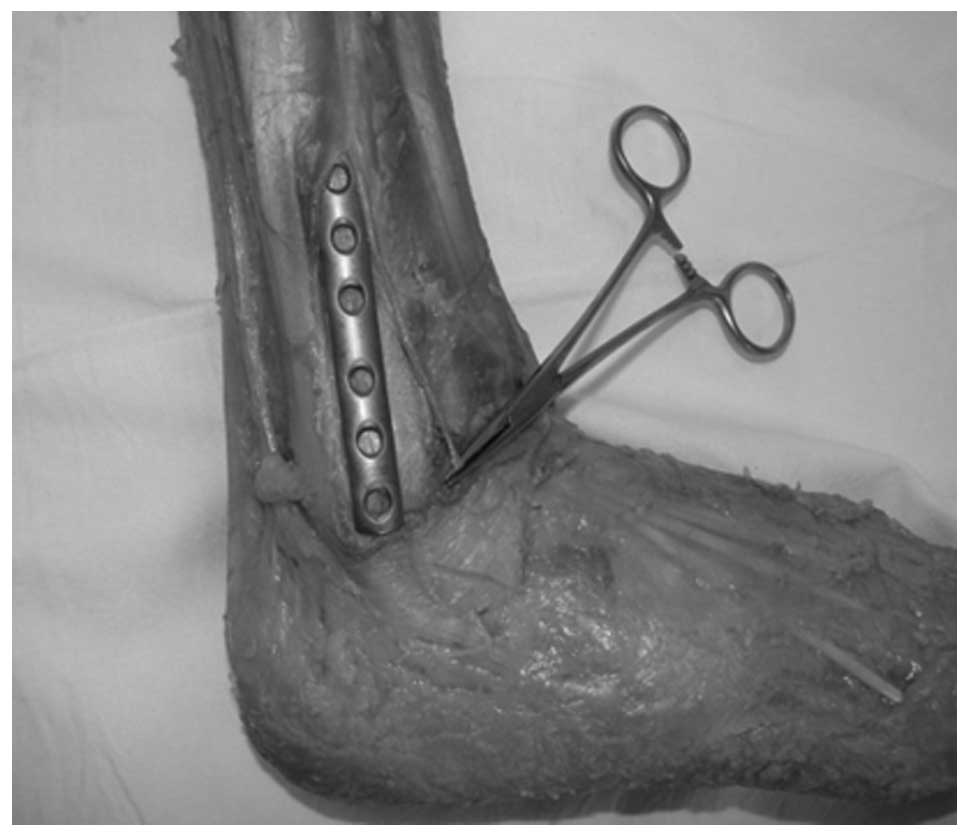Anatomical factors affecting the selection of an operative approach for fibular fractures involving the posterior malleolus
- Authors:
- Published online on: December 21, 2012 https://doi.org/10.3892/etm.2012.872
- Pages: 757-760
Metrics:
Total
Views: 0 (Spandidos Publications: | PMC Statistics:
)
Total PDF Downloads: 0 (Spandidos Publications: | PMC Statistics:
)
Abstract
Several operative approaches are available at present for the exposure and fixation of distal fibular fractures combined with posterior malleolus fractures. The present study was designed to study the anatomical characteristics of the distal fibula and to thereby evaluate the advantages and limitations of various operative approaches, as well as their indications for specific conditions. Ten leg specimens from below the knee joint were dissected using posterior, lateral and posterolateral approaches to the fibula. The adjacent vulnerable structures, including nerves, blood vessels, tendons and ligaments, were carefully examined and their distances from the posterior malleolus were recorded. The distance was 7.2±4.1 mm between the sural nerve and the posterior section of the fibula, 79.2±23.5 mm between the lateral malleolus tip and the point where the shape changes in the lower fibula and 66.4±17.4 mm between the lateral malleolus and the jointed tendon of the peroneal and flexor hallux longus muscles. The widest anteroposterior diameter of the distal fibula was 27.3±3.5 mm. Various approaches have certain advantages and limitations when these anatomical factors are taken into account. The choice should be based on the height of the fibular fracture line, the type of posterior malleolus fracture, the effect of the fracture on the stability of the ankle joint and the materials used for internal fixation.















